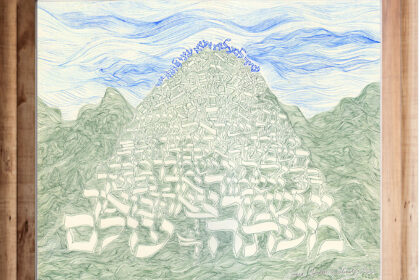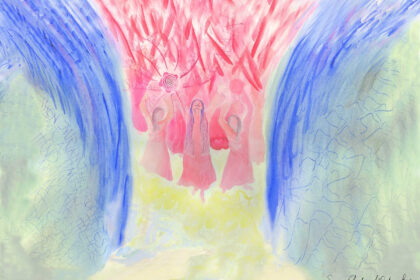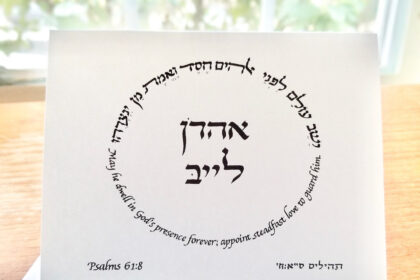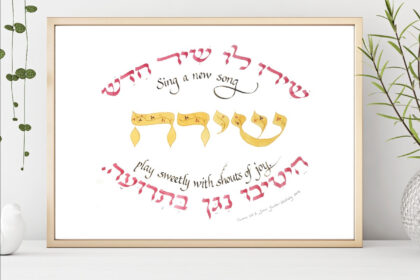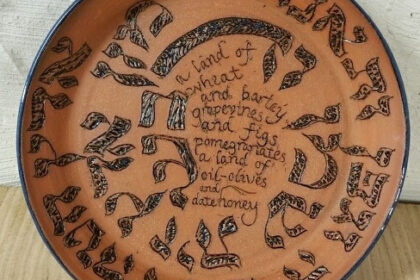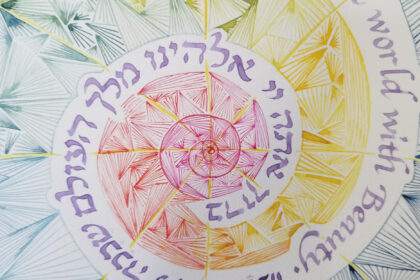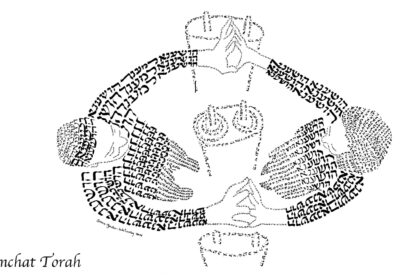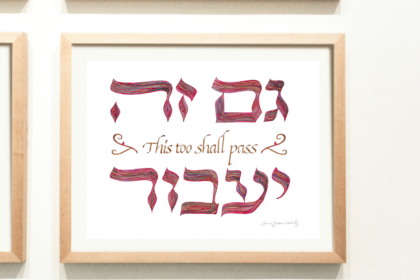Art and Coping
March 14, 2021
I am in the midst of creating a piece of artwork that will be presented as a gift to a couple who has tragically lost their baby at the age of 1 month.
Earlier this year I created another piece for a couple who gave birth to a stillborn child.
I’ll share their story, and the story of creating a piece of artwork for them, below.
I see art as essential to all stages of life, including the end of life. In times of coping through pain, isolation, suffering, and loss, art has the potential to express something deep within and create an emotional experience. A piece of artwork- and the act of creating art- may spark a cathartic cry, a feeling of connection, and possibly an ounce of hopefulness.
This past week I borrowed the book Drawing on the Artist Within from my mom, and author Betty Ewards’ words on the power of art resonated for me:
“Drawings, like words, have meaning- often beyond the power of words to express, but nonetheless invaluable in making the chaos of our sensory impressions comprehensible.”
I’ll add that words and art together form a language that I feel is capable of great expression. For me, incorporating words from ancient holy texts into my artwork adds dimensionality to the text and sets the stage for it to be experienced visually and emotionally, instead of purely intellectually.
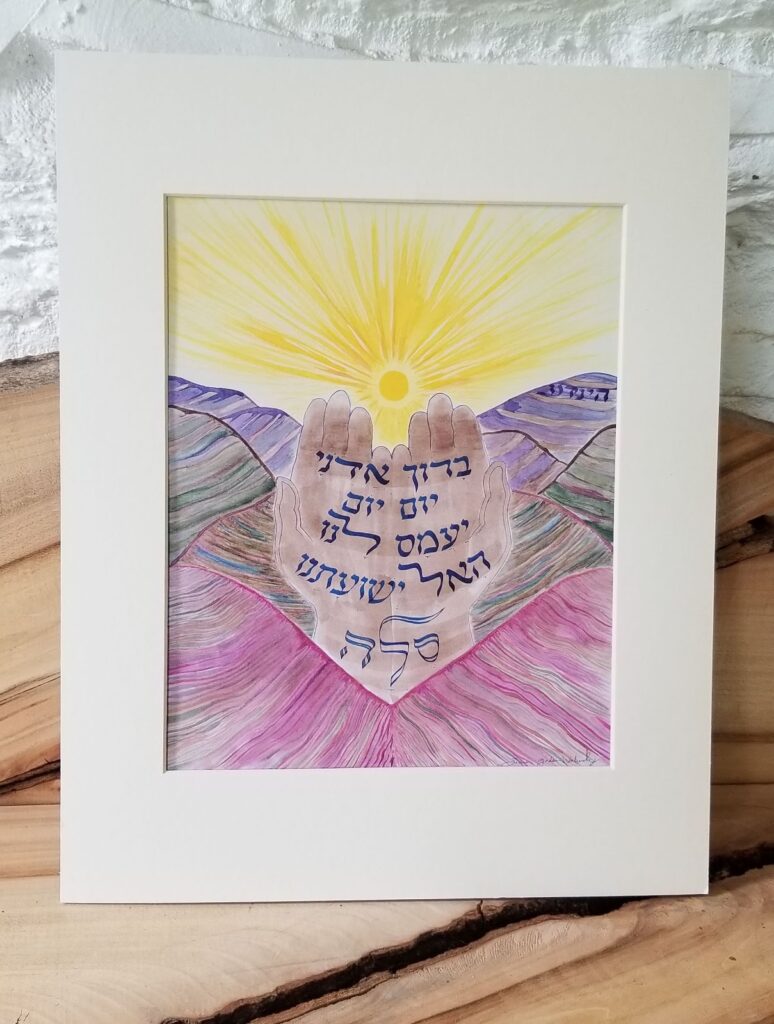
In my experience, hand drawn Hebrew words create an emotional impact even if the viewer doesn’t know their precise meaning. (I think this can be true of other languages as well, but I feel particularly drawn to the Hebrew letters which I’ll share more about another time.) Something intangible but quite deep is communicated through the calligraphic artwork- perhaps a feeling of connection to thousands of years’ worth of ancestors and the words that they drew upon for courage and strength.
When Rachel (name used for anonymity) contacted me through my Etsy shop (PasukArt) earlier this year after she gave birth to a stillborn daughter it was to inquire about commissioning a piece of artwork to give to her husband for their 2nd wedding anniversary. She wanted a gift that would memorialize their daughter and reassure them of their faith in God and hope in life.
I was moved by Rachel’s openness in sharing her situation with me. I was impressed that in the depths of her loss she had the wisdom and faculty to recognize the tools she needed and reach out for them. I was grateful that she valued the power of art to help her and her husband in their process of grieving and reclaiming life, and that she had found me and reached out.
I’ve asked Rachel if she would share more about how she came to the decision to give a piece of Torah artwork to her husband at this time in their life. I hope that her story will reach the people it needs to reach.
Rachel:
“Our last wedding anniversary was bittersweet. We had been hoping that we would be celebrating as happy, exhausted parents of a three-month-old daughter. Instead, we were commemorating our love in the midst of our grief at the loss of this precious life.
Therefore, when thinking of a gift for my husband to mark the day of our second wedding anniversary, l struggled to find something that would be meaningful to him while acknowledging this monumental loss in our lives.
I was browsing the internet for some ideas when I came across PasukArt, and I knew I found the right gift, as art can express the depth of feelings beyond the finitude of words.
During our daughter’s 38 ½ weeks in the womb, my husband and I had an added intent when we were singing zemirot and learning Torah, especially when we knew she was able to hear us, to inculcate the values and messages that were so meaningful to us into her from the very beginning. Torah has been a foundational piece of mine and my husband’s lives, both as individuals and as a couple, and we often spoke about how and what we would like to share with our daughter once she was born.
The specific pasuk (verse) I chose for the artwork is my husband’s favorite pasuk, something his grandfather used to say often, and a message that has helped us on our grief journey as we mourn for our sweet child.
It is a message that, to me, recognizes the importance of blessing G-d each day, even though everyday is not always a happy day, as G-d is our support, the One who can provide us salvation during our most difficult times.
It truly has been through the teachings of our faith and the support of our religious community that we have been able to get through this difficult time. The artwork, while acknowledging this sentiment, is also a reminder of the light our daughter continues to shine on our lives, motivating us to learn more, to be kinder to others, and to make the most of a life that she was unable to live.”
בָּ֤ר֣וּךְ אֲדֹנָי֮ י֤וֹם ׀ י֥וֹם יַֽעֲמָס־לָ֗נוּ הָ֘אֵ֤ל יְֽשׁוּעָתֵ֬נוּ סֶֽלָה׃
Blessed is Ad-nai. Day by day supporting us, G-d, our deliverance. Selah.
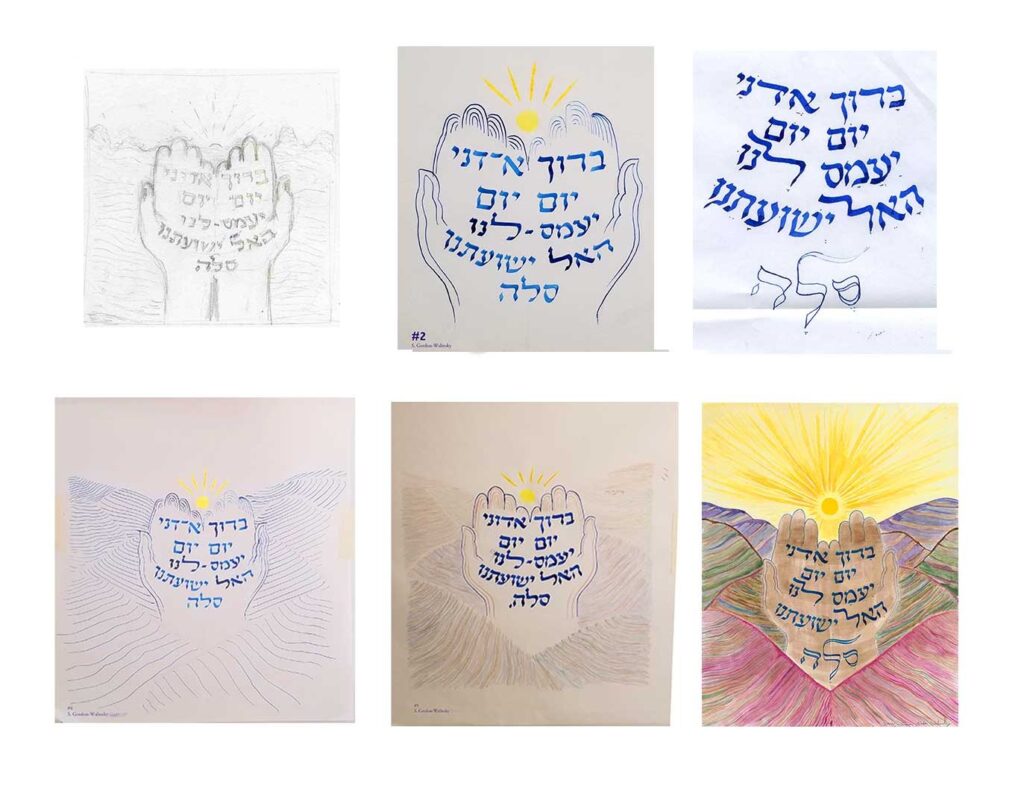
The creation of the artwork: from a sketch to a finished watercolor painting
They were the highlights of our story’s beginning. And they are the images that filled my mind whenever we were asked to tell our story of meeting and falling in love. I shared my vision with my husband and it was precisely these 5 scenes that resonated for him as well.
The hard work was to get the images from my mind’s eye onto paper. And to choose a style, a medium, a mood.
I didn’t land on micrography right away.
I considered a realistic painting, an abstract storyline… but they didn’t feel like they expressed what I wanted to express.
I put my pencil point to the paper and started to draw. What came out was an image of two hands reaching upward, out of the mountains, the text written in the hands, their daughter’s name delicately placed at the top of a mountain.
At some point I started to develop a sense of the meaning that was unfolding – the hands were holding the words of the pasuk (biblical verse) as if holding a siddur (prayerbook) and pleading with G-d.
At the same time I felt that the hands represented G-d’s support, emanating from the Judean Hills, a symbol of G-d’s physical resting place. Rachel saw the sketch and suggested a rising sun would symbolize hope, which I agreed was the finishing touch.
For sure, Rachel and her husband’s relationship to the art will change overtime and there’s room for that growth in this piece. As it says, “Blessed is Ad-nai. Day by day supporting us, G-d, our deliverance. Selah.” Their particular needs for support may change over time, but their faith that G-d is the support is constant.
I don’t know Rachel beyond our exchange through Etsy, and yet I have spent hours and hours thinking about her and her husband and their daughter, whose name is subtly embedded in the artwork. My prayers that were in my mind and heart while I created this piece are also energetically embedded in the art. I feel a bond with her and her family forever through this artwork. With Rachel’s blessing I have made this artwork into a very affordable print that is available to everyone through my Etsy shop.
המקום ינחם אתכם בתוך שאר אבלי ציון ירושלים
May the Omnipresent comfort you among the rest of the mourners of Zion and Jerusalem (Hamakom yenakhem etkhem betokh shaar avelay tziyon viyrushalayim).

Artist-Educator, PasukArt.com
